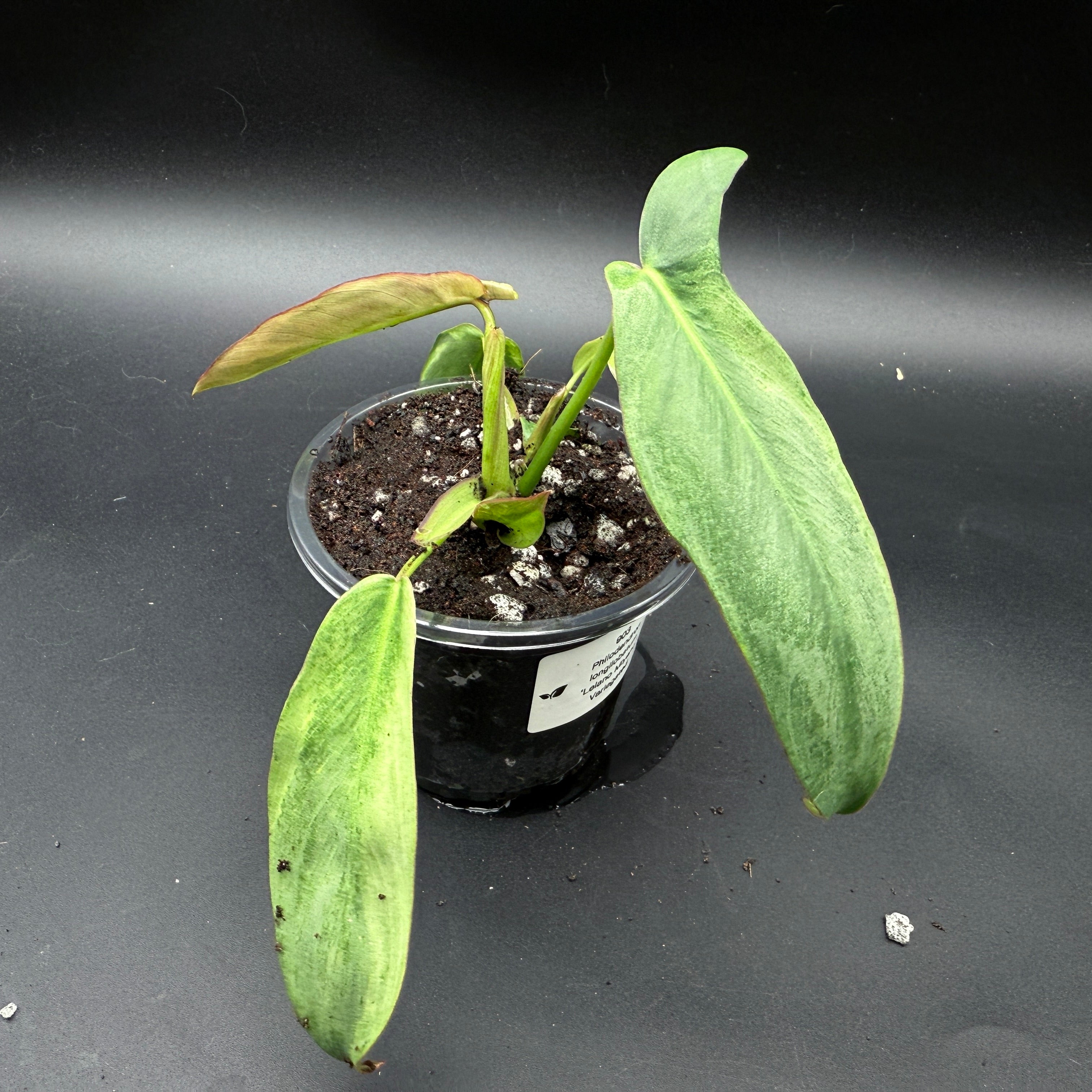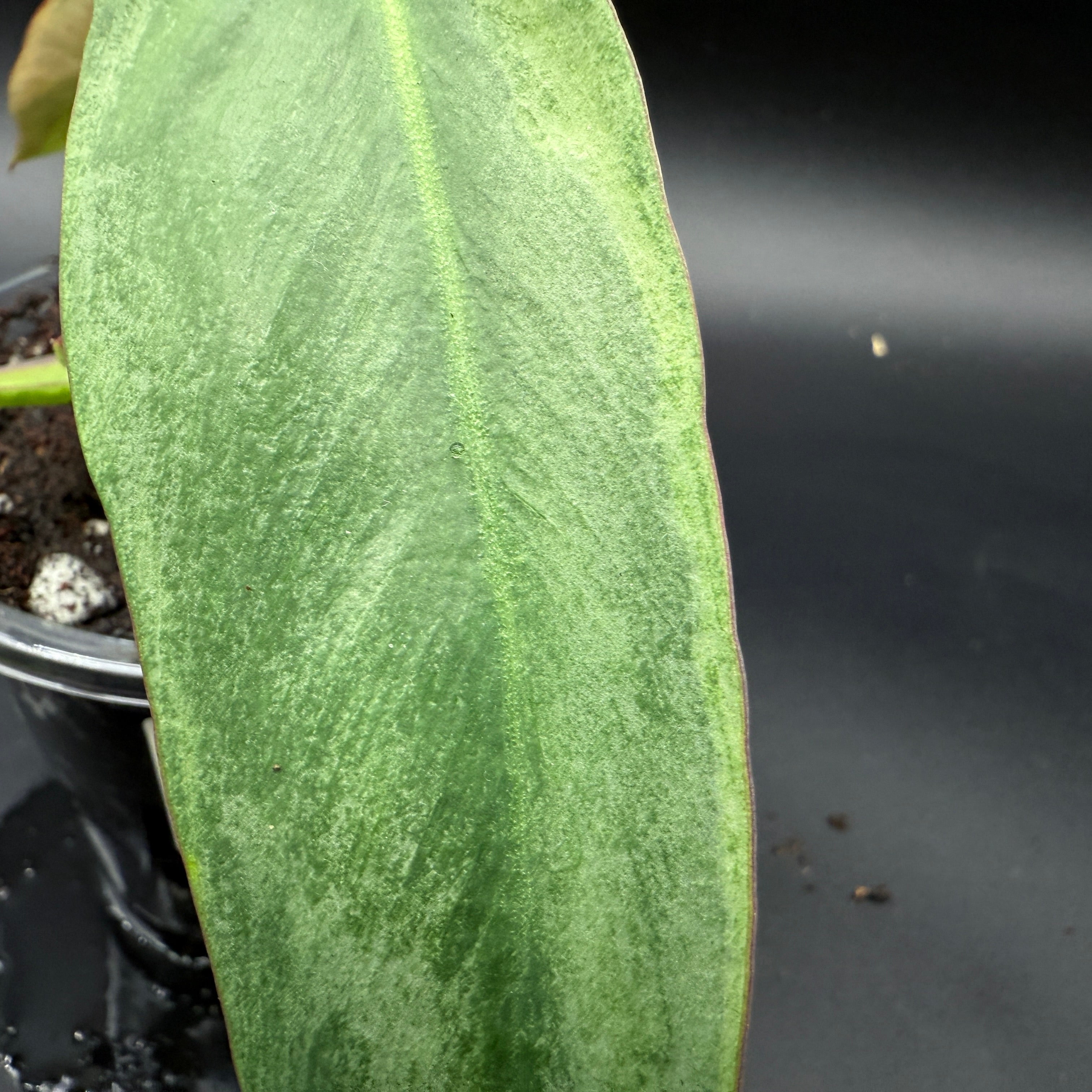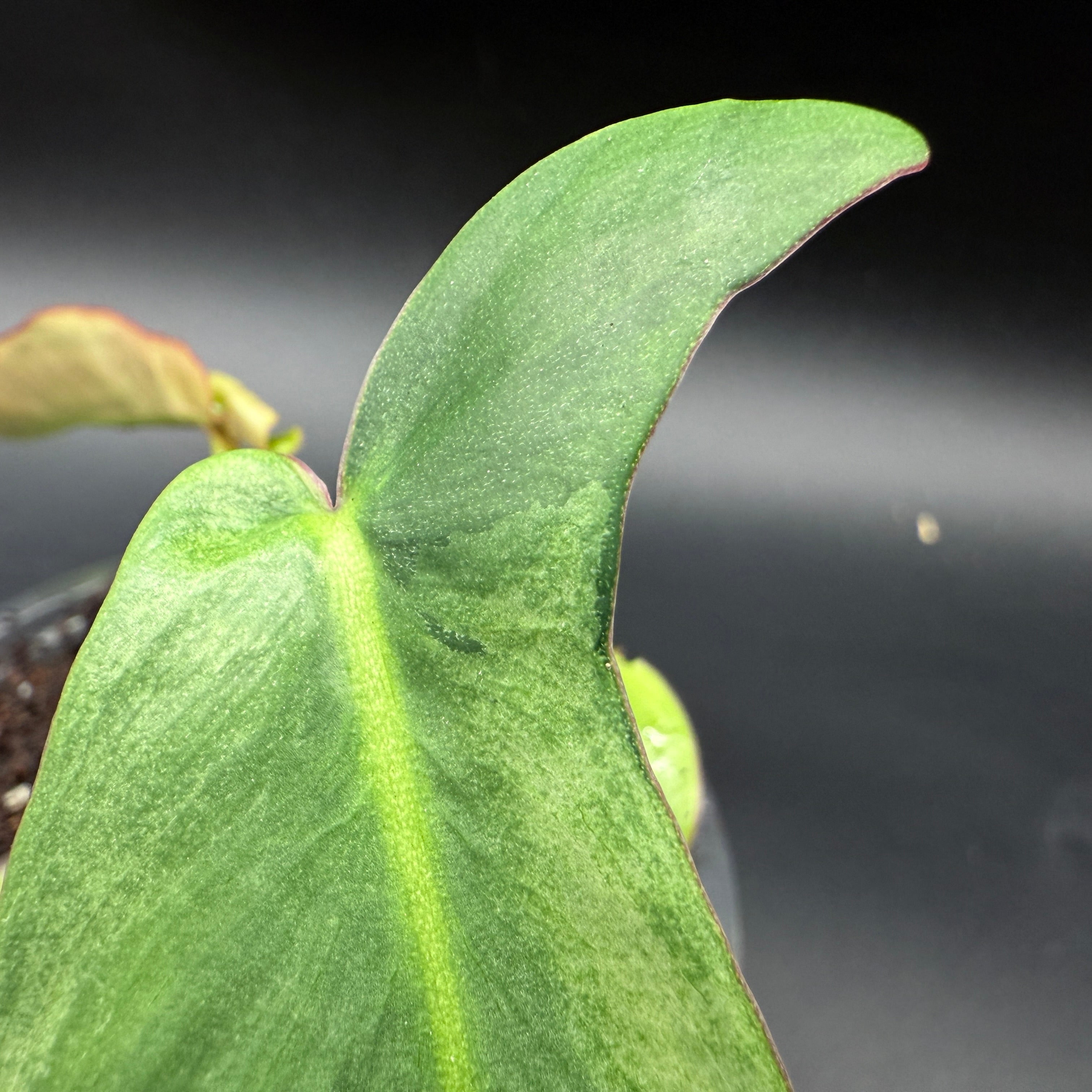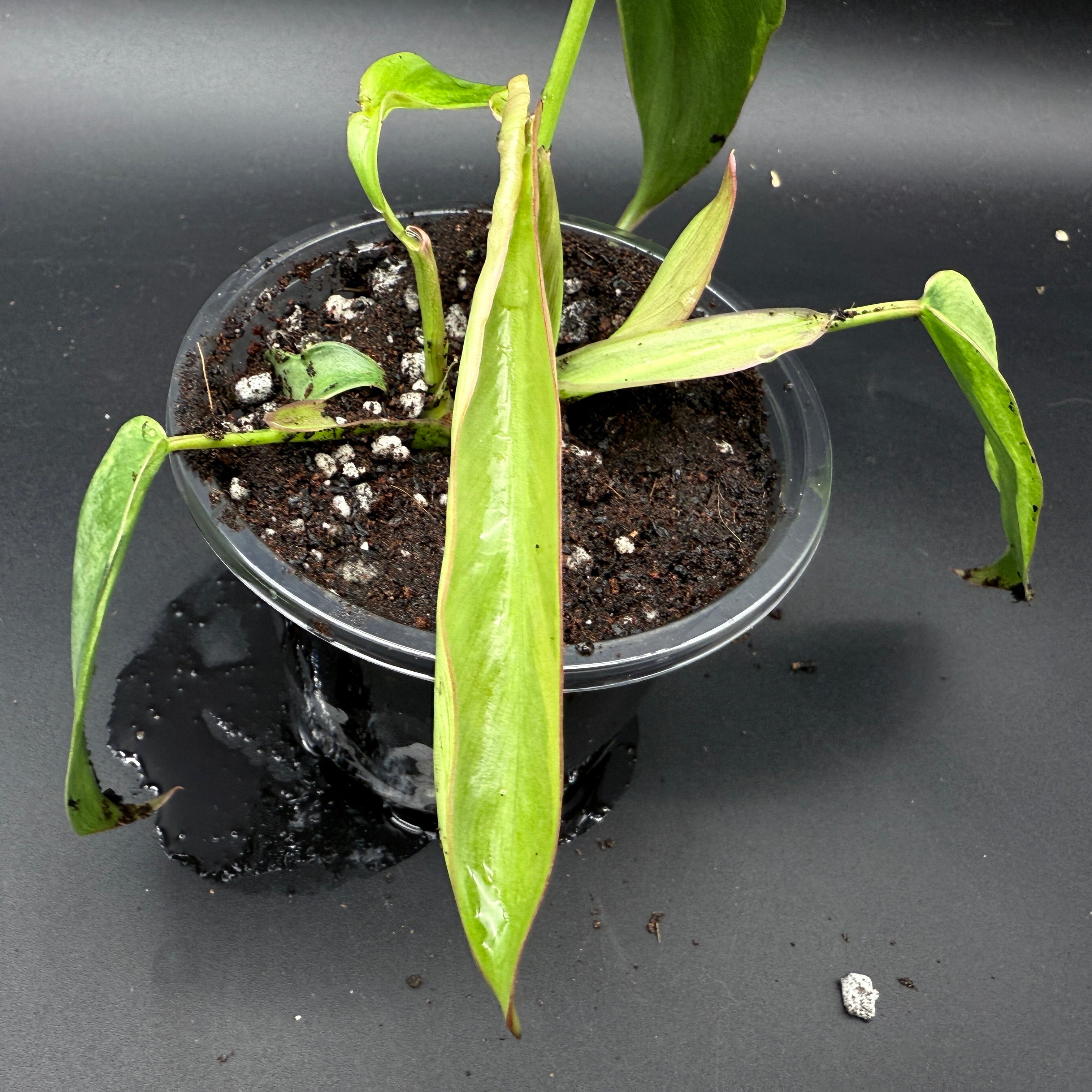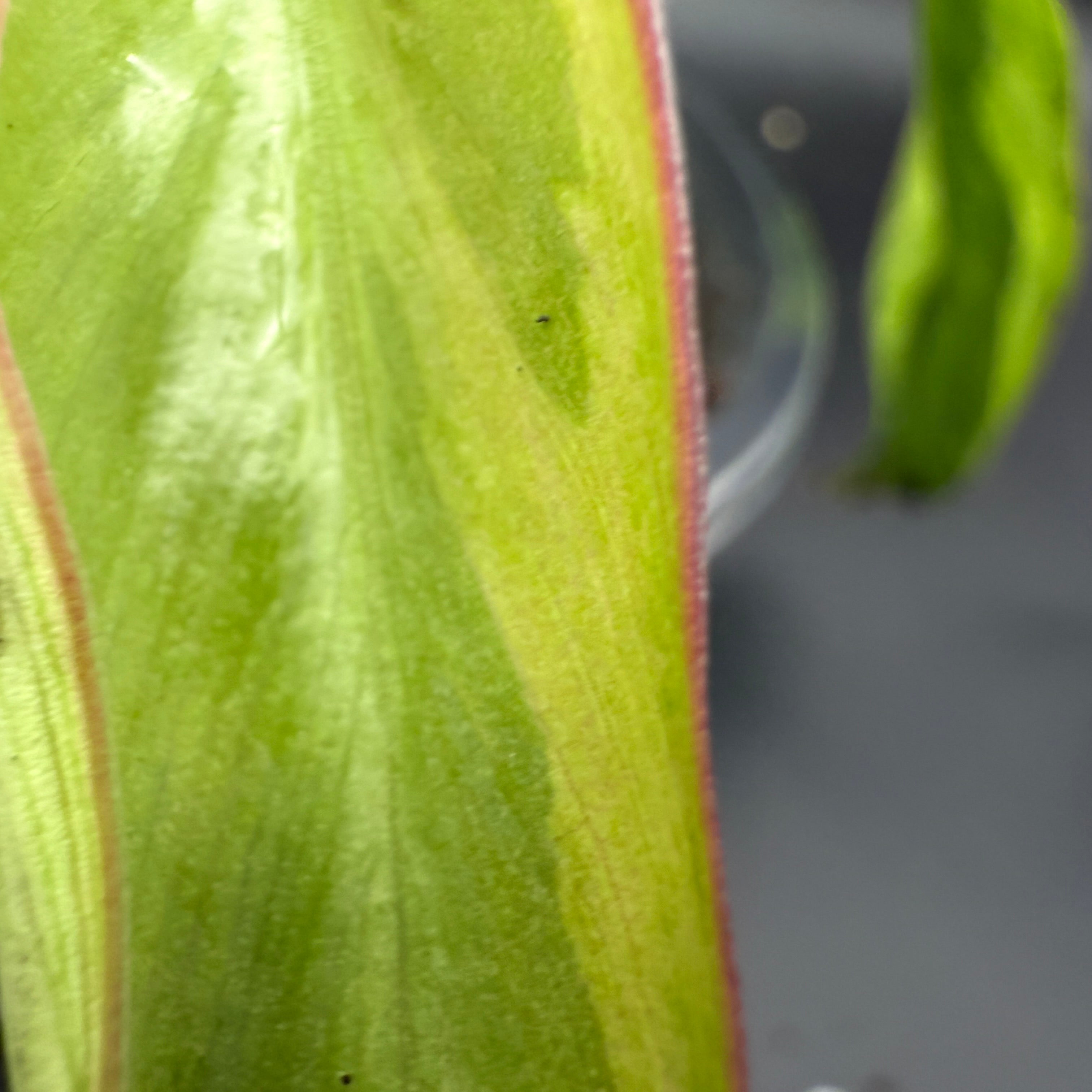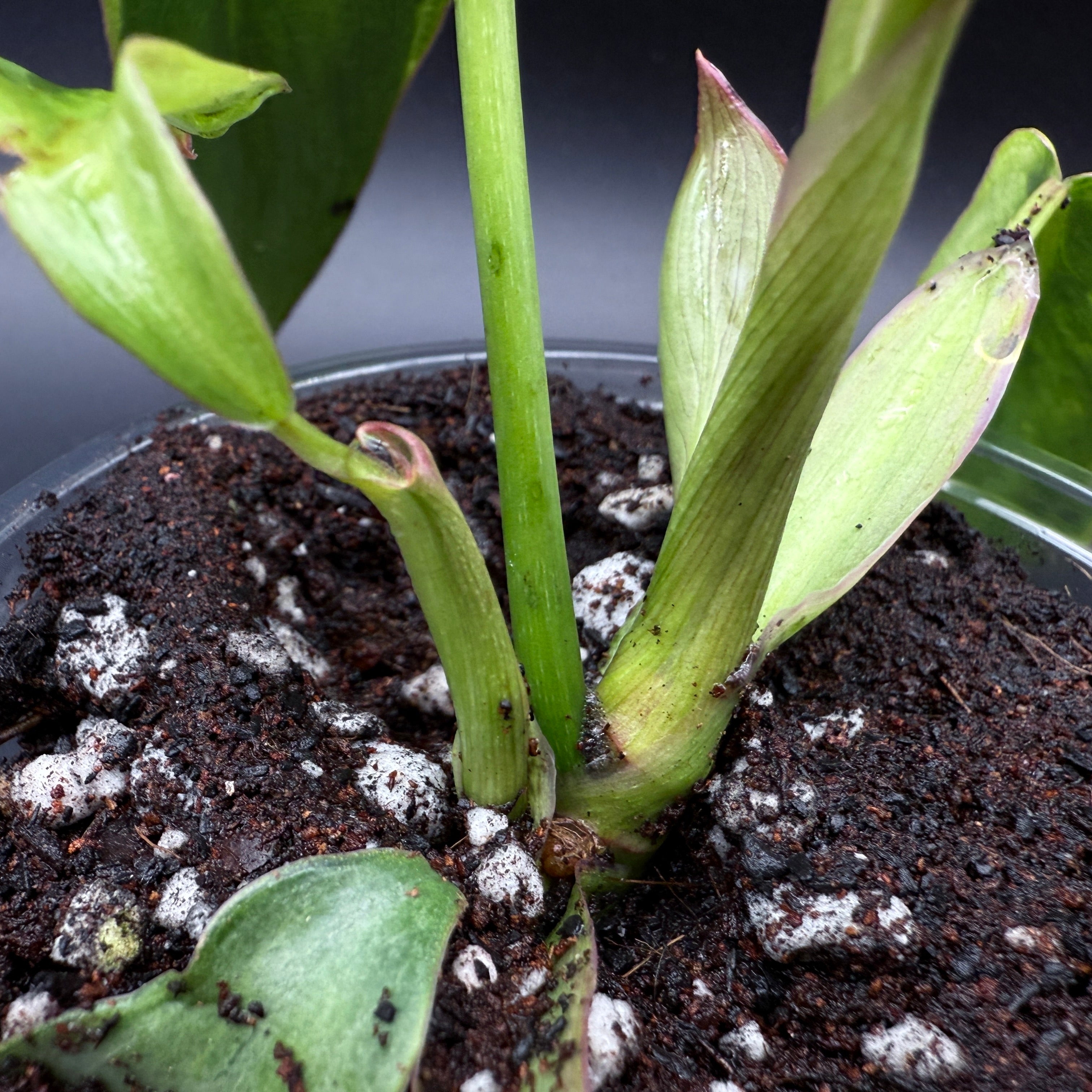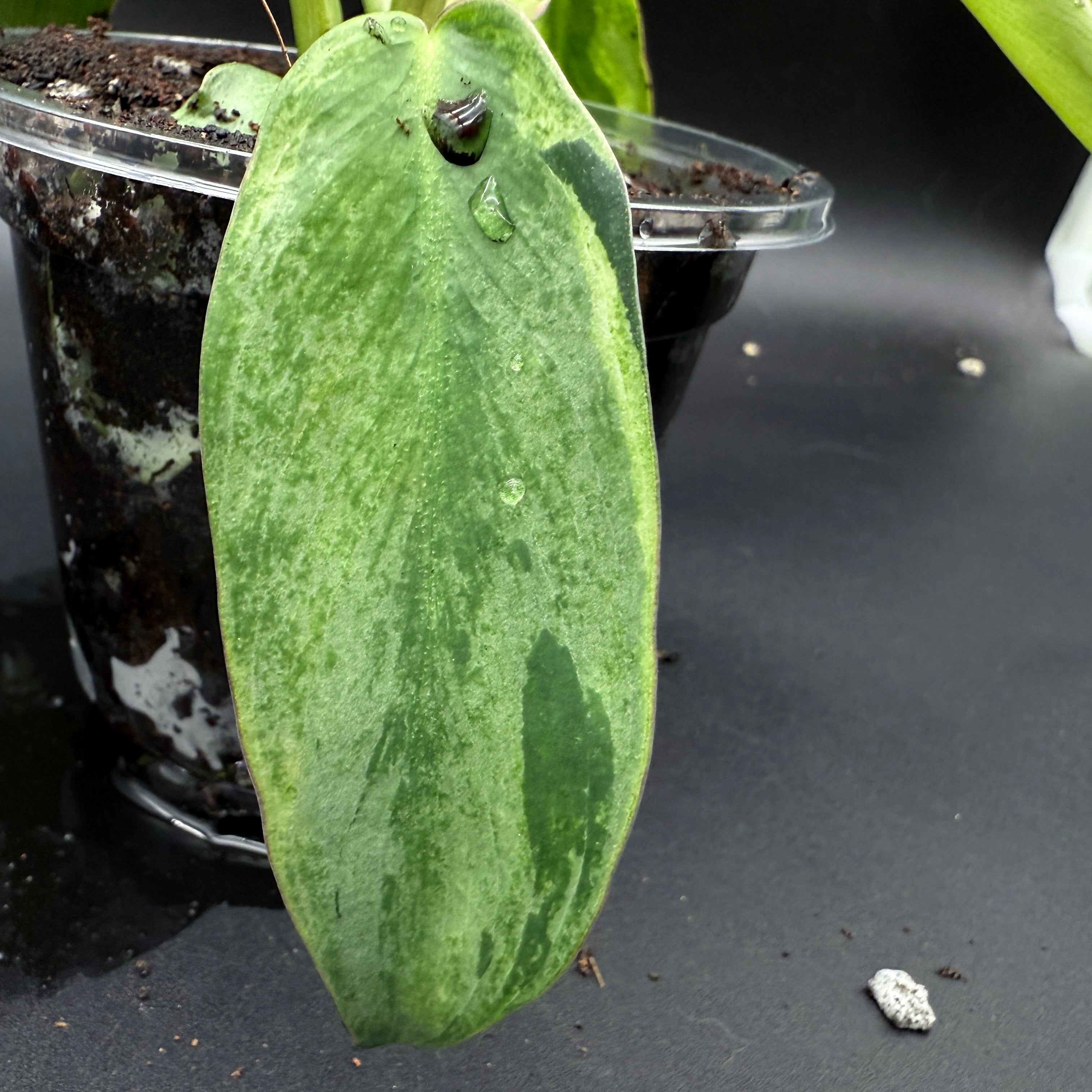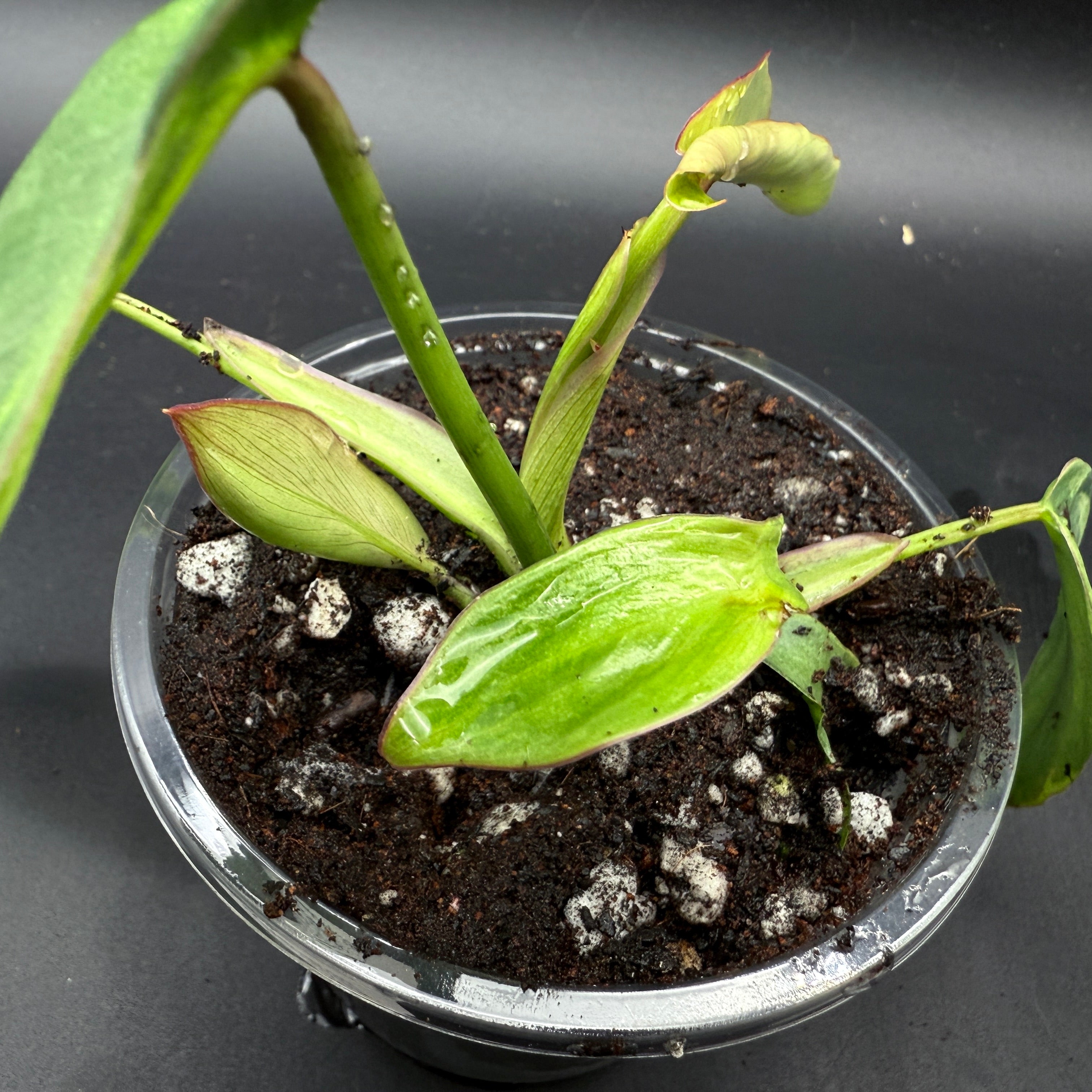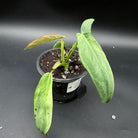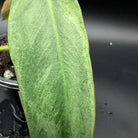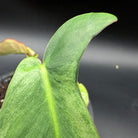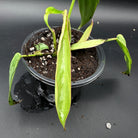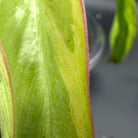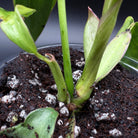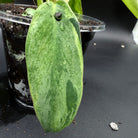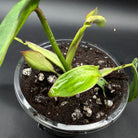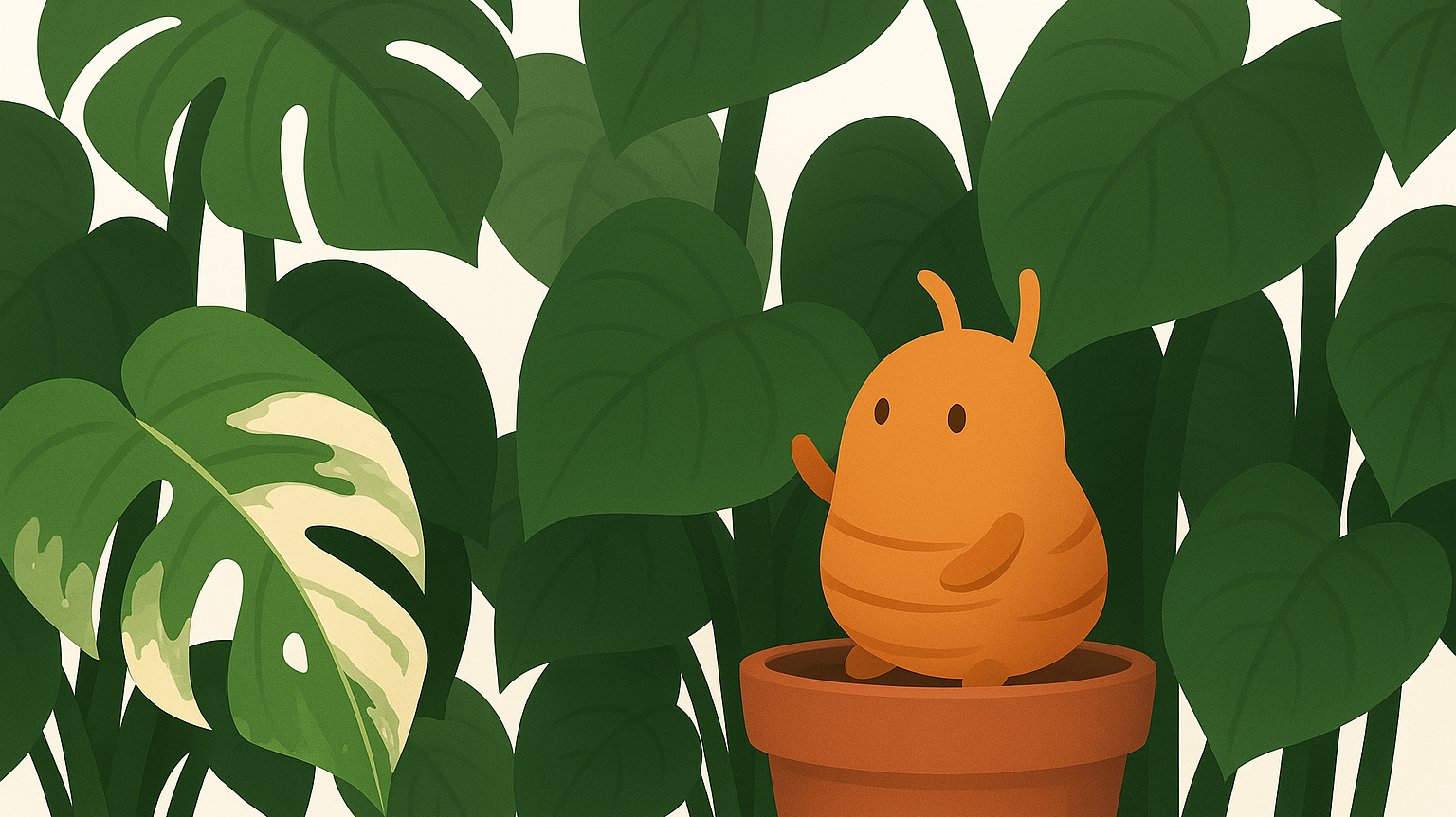Philodendron longilobatum ‘Lelano Miyano’ Variegated (903)
The Philodendron longilobatum 'Lelano Miyano' Variegated is a strikingly unique cultivar prized for its elongated, deeply lobed leaves and stunning variegation. With each leaf unfurling in a mix of green, creamy white, and occasional splashes of yellow, this plant is a true collector’s gem. Its refined structure and climbing growth habit make it a standout in any rare plant collection.
Notable Features:
- Elongated, Deeply Lobed Foliage: The signature narrow, multi-lobed leaves give this philodendron an architectural, almost sculptural presence.
- Rare & Unpredictable Variegation: Each leaf develops a unique pattern, ranging from marbled streaks to bold sectoral variegation.
- Climbing Growth Habit: Thrives with a moss pole or support, producing larger, more dramatic foliage over time.
- Sought-After Collector’s Variety: A rare and highly coveted plant, especially in its variegated form.
Interesting Facts:
- Philodendron longilobatum is a member of the Meconostigma group, known for its deeply lobed foliage and climbing habit.
- The ‘Lelano Miyano’ form is named after the collector who popularized this particular variety.
- This species prefers higher humidity and bright, indirect light to maintain its striking variegation and encourage larger leaf development.
Shipping Note:
Variegated leaves may be more delicate, and minor cosmetic damage such as small tears or bruising may occur during transit. We do not offer refunds or replacements for shipping-related leaf damage. If you would like a live plant guarantee, we highly recommend opting into FGMN Shipping Protection at checkout.
Blog posts
What Is an Aroid?
Aroids evolved to solve the hardest problem in the rainforest—how to live with too little light and too much competition. The result? Some of the most beautiful plants on Earth.
How to Keep Variegated Leaves Through Winter
Winter light can turn your prized variegated leaves solid green. It isn’t bad care—it’s survival. Learn why plants shift their patterns when days get shorter, and how steady light and warmth can help keep the white in your Monstera or Philodendron from fading away.
Can Plants Hear Touch?
Plants don’t have ears, but they aren’t deaf to their surroundings. From sensing a fingertip brush to detecting the vibrations of chewing insects, plants register touch and sound through finely tuned cellular systems — and even change how they grow in response.

